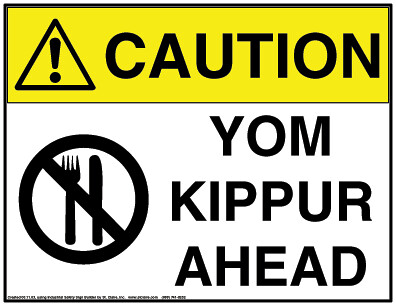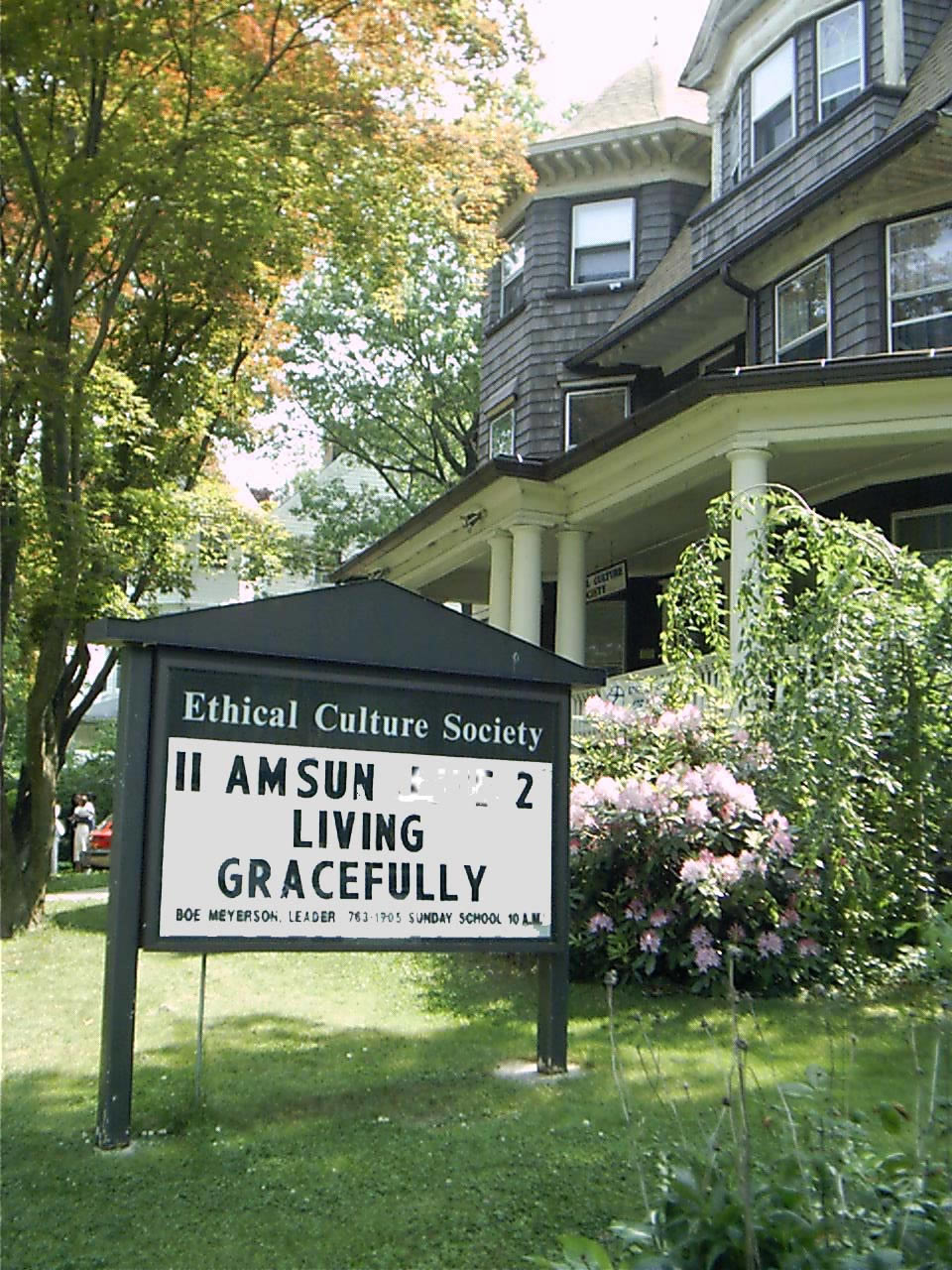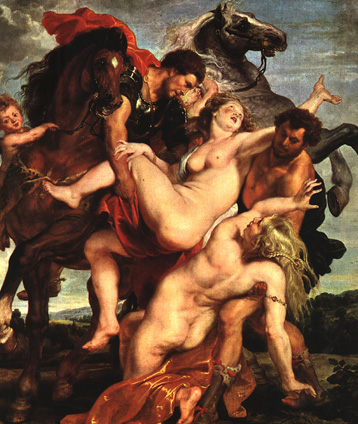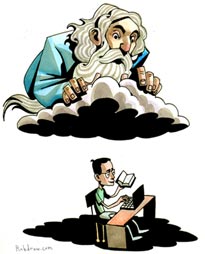
The Chief Rabbi of the British Empire Rabbi Jonathan Sacks says in his introduction to the new Koren-Sacks Siddur that, "The siddur is the choral symphony the covenantal people has sung to God across forty centuries from the days of the patriarchs until the present day." He calls it a "calibrated harmony."
We respectfully disagree. Contrary to what you may have been taught in Hebrew school or Yeshiva, contrary to what you may read in your commentaries and average theological essays, the classical prayers are not works laying out a systematic theology or a linear philosophy of our faith. They make no such claim.
We say that the Siddur is not a magnificent symphony festooned with harmonies.
How so? The Siddur prayer service that we know zigs when it should zag. It starts and stops and restarts. It changes the topic of conversation abruptly and frequently. It meanders and wanders. It contradicts and repeats in patterns that have no peers.
We see in the synagogue a discordant set of performances. In jarring sequences we stand and we sit; then we stand again. We fall on our faces. We open doors and close doors. We march around and touch objects. We read from a scroll. We kiss our fringes. We cover our eyes. We chant, we sing, we are silent, we chant again.
These are unsymphonic sequences. Just consider everyday how we start to pray and then eighty-eight pages later we call out, "Bless," let us start to pray. Those previous words, it turns out, were just preliminary.
And don’t forget that during all of this churning of contents, we bodily shake and shiver and rock and roll.
We see in the Siddur and its performance a complex set of voices speaking to one another, and past one another, in a cacophony. The book we pray from is full of dissonance and disharmony, an unmusical gathering, set to tunes that do not mesh.
And that is what gives it such life and such vivid personality.
In this humming and silence, this whirling chaos of reading and singing, you find and mine a trove of complex and fascinating words, ideas, themes, tropes and compositions.
And so here is our novel emphasis. The Siddur’s words convey a multiplicity, and not just of ideas and precepts. Of personalities.It is the great Jewish get-together. It's not a symphony. It's our local, state and national fair all wrapped into one.This engagement is a clashing of archetypal Jews with an equally complex set of archetypal personalities of God.
Certainly we have before us a monotheistic faith – but one in which we see unmistakable evidence of a polymorphous view of the world.
Who then is in our Siddur (and Machzor) that speak from and to a Jewish psyche and expresses the yearnings of a Jewish soul with multiple trajectories and cultural meanings? Who inhabits this churning state of conflict?
In shul, our cast of venerated Siddur characters comes to life for us like the whirling avatars of a video game.
These characters are all part of our own inner Jewish psyches.
In the Siddur and the synagogue we find a multidimensional and complex set of religious master characters – in fact this is a busy marketplace full of personalities hurrying around in the psyche of every Jew.
Some of them know each other; some are gregarious; some are somber and solitary; some are vivacious and optimistic.
Scribes are prominent. They value books and learning and Torah. When we read a prayer that came from the liturgical author who was a scribe, we actually articulate and activate that inner scribe in our Jewish psyches.
There are also the priests who value the Temple and the patriarchs who led us in politics and a panoply of other onstage archetypes.
The Mystic calls out to us the notion that reciting texts brings one into an immediate experience of the divine power. He avers that mysticism is real and that it works.
The Healer promotes to us the idea that prayers for sick people will make them well.
The Bipolar personality of praying proposes that prayer is two things - an expression from the depths when humans are in despair - oy; and an expression from the heights when humans rejoice – hallelujah.
The Meditator recites and chants prayers in ways that induce transformations of human states of mind.
The Confessor issues a mea culpa – a confessional – and asserts to us that to utter our sins in a confession assists in our atonement, betters us as Jews and as human beings.
And yes within this whirling synagogue and Siddur we recognize even more archetypes.
The Magical thinker says that the use of formulas and the invocation of divine names in blessings and prayers help us to convince the Deity to act on our behalf.
The Community Organizer touts to all assembled that they must participate in social gatherings – the formation of a communities for prayer via the minyan – the Beit Kenesset – a mutual gathering at a place for praying.
The Musician chants, sings trop, nusach and niggun, all essential parts of the text and of the performance of prayer.
The Monotheist is a big fan of verse one of the Shema` of course.
And the Memorialist preaches from our psyches the importance of the services of the kaddish and yizkor, the remembrance of our departed.
In these High Holy Days, the great assembly of all these Jewish personalities rushing around in the synagogue-of-our-psyches speaks out to the multiple personalities of God with a great urgency.
The archetypes of the Jew reach out through the familiar prayers to address the recognized archetypes of God. God our King. Our Judge. Our Savior. Our Creator. Our Lover. Our Teacher. Our Legislator.
So then – as we enter into our most intense encounter of year with the liturgical prayer of the Siddur and Machzor, we need to keep uppermost in our thoughts that this process of diverse personalities of Jews speaking in distinct voices to the complex dimensions of the personality of one God – this cacophony of cultic communications, this is the Great-Jewish-Get-Together that brings us closer to redemption both as a whole people and as individual persons.
And finally we need to recognize that those archetypical personalities prominent in our prayerful dramas, they all come from that place that we call our Jewish soul. They are all reaching out to the hearing God, seeking a connection via prayer, an expression of great yearning.
Shanah tovah to all.
 We returned our Kindle DX to Amazon. We felt immediately that it was a throwback to an ancient technology even with its sleek form factor and its readability. The awkwardness of the interace was overwhelming to us. Accordingly, we are not surprised to read that the Kindle is as WSJ puts it gingerly, "Not Yet a Hit...."
We returned our Kindle DX to Amazon. We felt immediately that it was a throwback to an ancient technology even with its sleek form factor and its readability. The awkwardness of the interace was overwhelming to us. Accordingly, we are not surprised to read that the Kindle is as WSJ puts it gingerly, "Not Yet a Hit...." We've uploaded a new copy of an old paper:
We've uploaded a new copy of an old paper: The Times' ethicist, Randy Cohen, takes up the question of whether it is more ethical to give your donation to Harvard or the Borough of Manhattan Community College.
The Times' ethicist, Randy Cohen, takes up the question of whether it is more ethical to give your donation to Harvard or the Borough of Manhattan Community College. On the eve of Yom Kippur it is inspiring to see how a Hasidic Lubavitch celebrity kosher sex rabbi recently encouraged another celebrity (not Jewish) to repent of her sins.
On the eve of Yom Kippur it is inspiring to see how a Hasidic Lubavitch celebrity kosher sex rabbi recently encouraged another celebrity (not Jewish) to repent of her sins. Ynet reported in 2007 that a synagogue think tank group in Minnesota had come up with a startling conclusion. High synagogue dues may be the reason that fewer Jews affiliate. Well!
Ynet reported in 2007 that a synagogue think tank group in Minnesota had come up with a startling conclusion. High synagogue dues may be the reason that fewer Jews affiliate. Well!
 Gee thanks Glenn. You are a piece of work.
Gee thanks Glenn. You are a piece of work.

 Why is this Rosh Hashanah different from all the other Rosh Hashanahs?
Why is this Rosh Hashanah different from all the other Rosh Hashanahs?


 We try to keep track of new angles of vision on our teacher and mentor, the Rav, Rabbi Joseph B. Soloveitchik.
We try to keep track of new angles of vision on our teacher and mentor, the Rav, Rabbi Joseph B. Soloveitchik.
 Yes Norman Podhoretz is a Jew. He is an unhappy Jew. He is dismayed because so many of his fellow Jews are liberals. He has written a nasty and disrespectful book with the title,
Yes Norman Podhoretz is a Jew. He is an unhappy Jew. He is dismayed because so many of his fellow Jews are liberals. He has written a nasty and disrespectful book with the title,


 Ralph Waldo Emerson said poetically, "A foolish consistency is the hobgoblin of little minds, adored by little statesmen and philosophers and divines."
Ralph Waldo Emerson said poetically, "A foolish consistency is the hobgoblin of little minds, adored by little statesmen and philosophers and divines." It seems to us that the Times speculates a lot more than it used to about the motives for various governmental actions in foreign states. We consider this story an example of how not to report news -- seeking to explain away a good deed by ferreting out an imagined ulterior motive.
It seems to us that the Times speculates a lot more than it used to about the motives for various governmental actions in foreign states. We consider this story an example of how not to report news -- seeking to explain away a good deed by ferreting out an imagined ulterior motive. After an especially harrowing discovery, we have been trying to convey to a dear and esteemed person that in America when one tries to right a wrong, the accepted method of doing that is through currency - monetary payment.
After an especially harrowing discovery, we have been trying to convey to a dear and esteemed person that in America when one tries to right a wrong, the accepted method of doing that is through currency - monetary payment. If you recall not long ago because of copyright infringement issues, Amazon deleted some copies of 1984 from customers' Kindles, without first telling them!
If you recall not long ago because of copyright infringement issues, Amazon deleted some copies of 1984 from customers' Kindles, without first telling them! Can one person observe two religions at the same time? We've heard of the Jewbus, Jews who adopt Buddhist practice but do not renounce their Judaism. Some of us know Jews who claim to be Muslims while maintaining their affinity to the synagogue. Shhh. It's a secret.
Can one person observe two religions at the same time? We've heard of the Jewbus, Jews who adopt Buddhist practice but do not renounce their Judaism. Some of us know Jews who claim to be Muslims while maintaining their affinity to the synagogue. Shhh. It's a secret.
 Modern rabbis are still struggling with magic, with Madonna and with the "red bendel". Here is a March 2005 posting on the subjects at
Modern rabbis are still struggling with magic, with Madonna and with the "red bendel". Here is a March 2005 posting on the subjects at